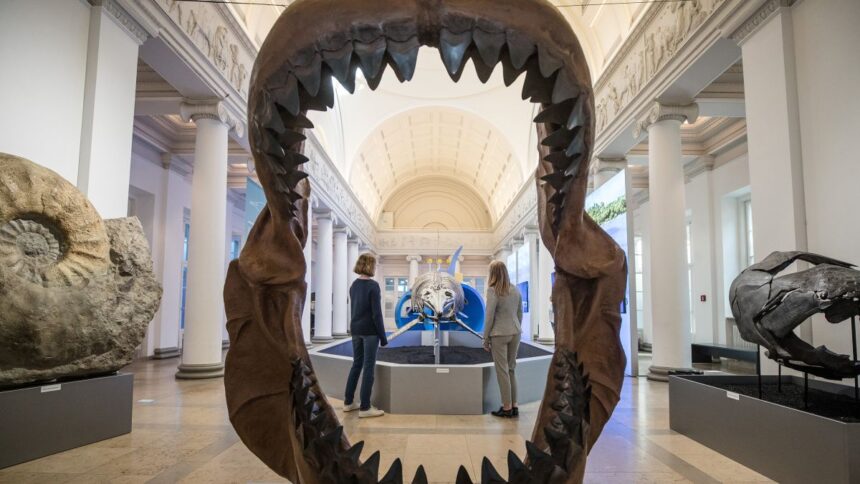6-foot megalodon shark babies were cannibals in the womb, study says

These extinct sharks gave birth to some really large babies — about the size of a full-grown human adult.
At birth, megalodons were about 6.6 feet, or 2 meters, in length, according to a study published Sunday in the Historical Biology journal.
Megalodons, scientifically known as Otodus megalodon, were huge sharks that grew up to 50 feet in length and roamed the oceans 15 million to 3.6 million years ago, said study author Kenshu Shimada, professor of paleobiology at DePaul University in Chicago.
The 6.6-foot measurement is fairly accurate and aligns with other findings at megalodon nurseries in Panama and Spain, said Jack Cooper, a fossil shark researcher and doctoral student at Swansea University’s department of biosciences in Wales, United Kingdom, who was not involved in the study.
The study is significant because there is not much research out there about the megalodon’s reproduction, he said.
To find the animal’s length at birth, researchers looked at CT scans of a megalodon’s vertebrae that was originally found in Belgium in the 1860s. Much like the rings of a tree, a megalodon’s vertebrae have annual growth bands that allow scientists to track the shark’s age.
The specimen was believed to be 46 years old when it died, so Shimada counted the growth bands back to the birth ring and calculated the length of the animal at birth. This particular shark was estimated to be about 30 feet in length at death.
Survival of the fittest
These extinct sea creatures didn’t grow that large in the womb by luck.
While growing inside its mother, megalodons would eat other unhatched eggs, which is known as intrauterine cannibalism.
“The consequence of the egg-eating behavior is that only a few pups will survive and develop, but each of them can become considerably large in size at birth,” Shimada said.
Their large size at birth reduces the chances of the baby megalodons from being eaten by other predators.
Some modern-day sharks that are a part of the order Lamniformes — the same one the megalodons belong to — also practice this behavior.
Sand tiger sharks eat other unhatched eggs in the womb, and Shimada said that they sometimes also eat other hatched siblings.
It costs female sand tiger sharks a lot of energy to raise such large babies, he says, but similar to the megalodon, this evolutionary strategy reduces the chances of them being eaten after birth.
Looking forward
Much is still unknown about the giant shark, said Shimada, who wants to discover more. He has had an interest in the megalodon since he was 13 years old when he found a 2-inch megalodon tooth at a geology site outside Tokyo.
While this study has revealed much about the birth of a megalodon, the specimen was only 46 years old, which is middle age for this animal.
Shimada hopes to research the shark’s later years, which is estimated to be between 88 to 100 years old, to learn its growth pattern.